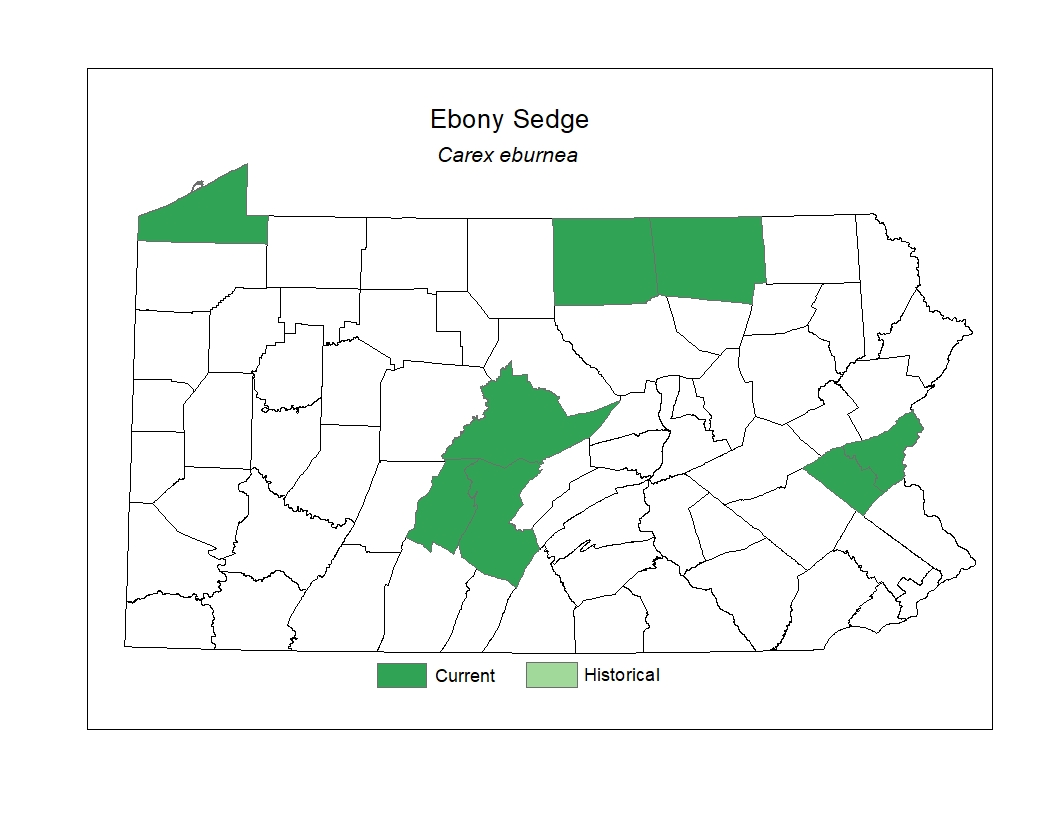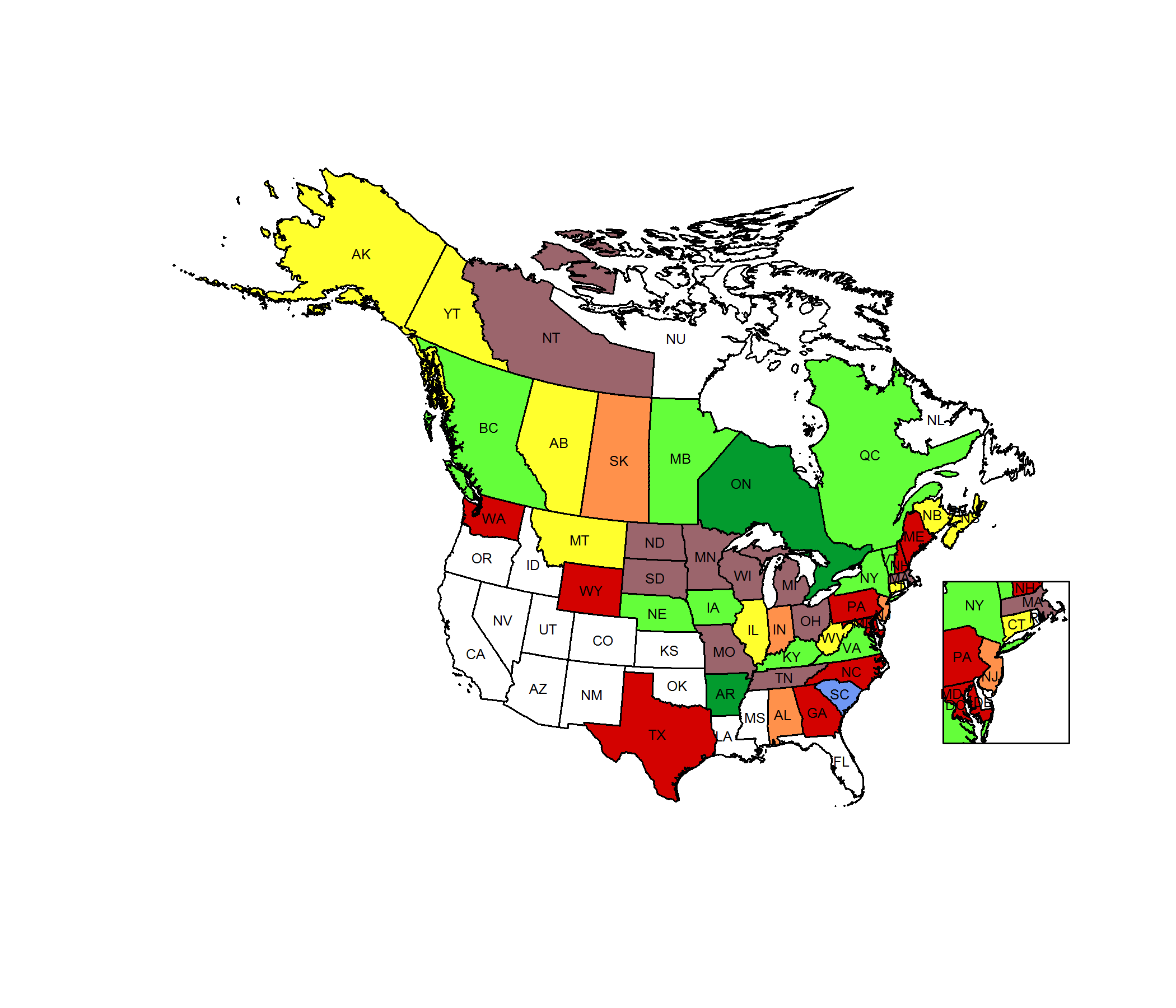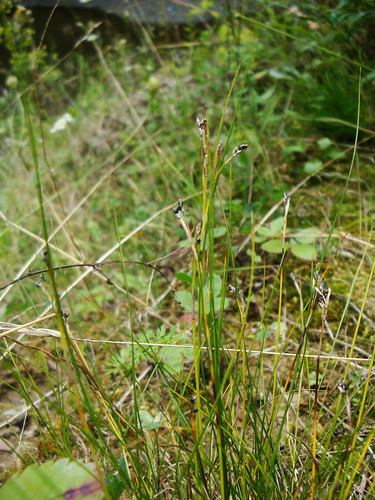 Species Factsheets
Species Factsheets
Carex eburnea
Ebony Sedge
State Status: Pennsylvania Endangered (PE)
PBS Status: Pennsylvania Endangered (PE)
Federal Status:
Global Rank: G5
![]() rank interpretation
rank interpretation
State Rank: S1
Did You Know?
This sedge is a great alternative to typical lawn grass.
Description
Ebony sedge (Carex eburnea) is a low, grass-like plant with extremely slender, elongate leaves and very small, three-sided, black, nutlet-like fruits in terminal clusters that appear in late spring. The fruits may persist for months after maturing. The plant has creeping, underground stems. It is one of the more easily distinguished species of the large and complex genus Carex.
Rank Justification
Critically imperiled in the nation or state because of extreme rarity (often 5 or fewer occurrences) or because of some factor(s) such as very steep declines making it especially vulnerable to extirpation from the state.
PABS
The ebony sedge has been given a status of Endangered on the Plants of Special Concern in Pennsylvania list by the Pennsylvania Biological Survey and the Department of Conservation and Natural Resources, based on the relatively few historical and recent records that have been documented in the state. More field work is needed in order to justify this status, since the plant may have been overlooked due to its inconspicuous appearance and because its habitat is not always easily accessible.
Habitat
The species grows in a variety of habitats in its range, but in Pennsylvania it is typically found on cliffs, outcrops, steep slopes and banks, often on northerly exposures, that are composed of limestone or calcareous rock.
Survey Dates
Flowers, fruits June - July; fruit is persistent
Distribution

Conservation Status Map

NatureServe. 2017. NatureServe Explorer: An online encyclopedia of life [web application]. Version 7.1. NatureServe, Arlington, Virginia. Available https://explorer.natureserve.org.
https://hoffmannursery.com/plants/details/carex-eburnea
- NatureServe. 2018. NatureServe Explorer: An online encyclopedia of life [web application]. Version 7.1. NatureServe, Arlington, Virginia. Available at https://www.natureserve.org/explorer
- Pennsylvania Natural Heritage Program. 2018.
- Rhoads, A.F. and W.M. Klein, Jr. 1993. The Vascular Flora of Pennsylvania. American Philosophical Society, Philadelphia, Pennsylvania. Rhoads, A.F. and T.A. Block.
- 2007. The Plants of Pennsylvania: An Illustrated Manual. 2nd edition. University of Pennsylvania Press, Philadelphia, Pennsylvania.







